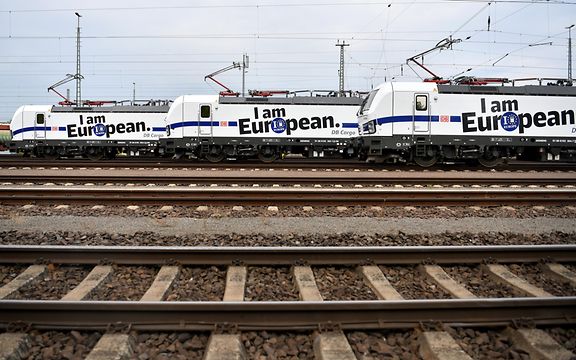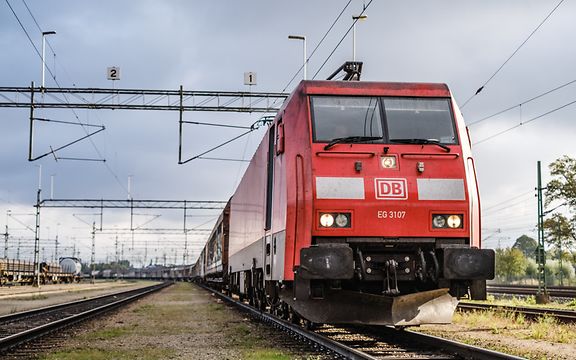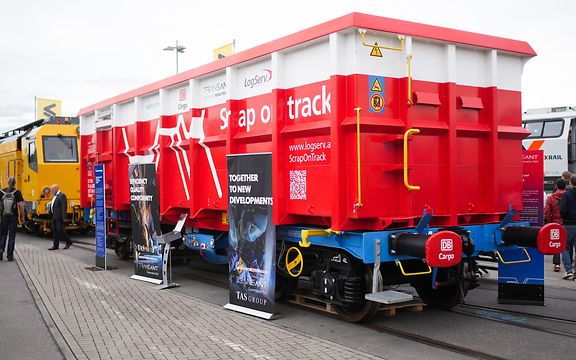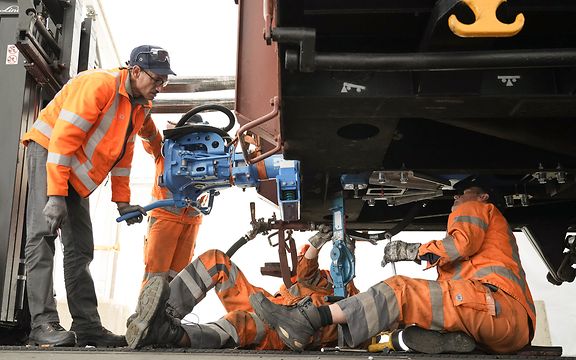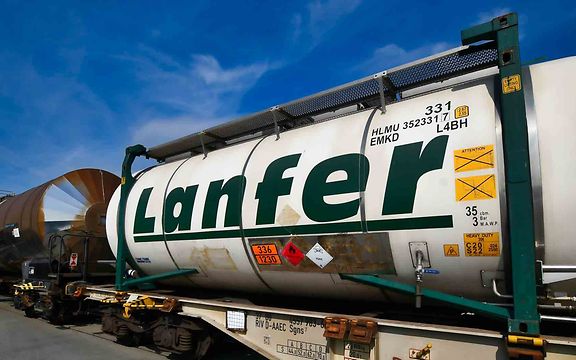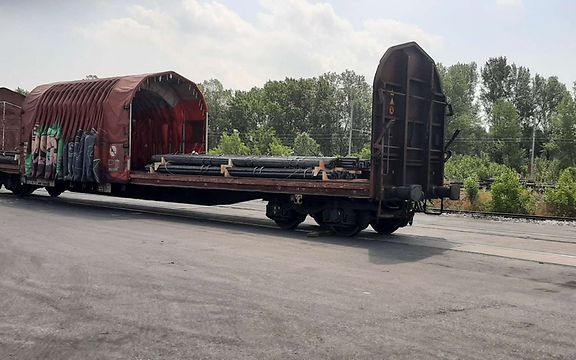DB Cargo and Stena Line move freight wagons across the sea to Scandinavia
Europe’s largest freight operating company and one of the largest ferry operators in the world have renewed their partnership agreement.
Each year, more than 90,000 intermodal and conventional freight wagons are transported between Scandinavia and Europe’s central and southern regions. The wagons carry metal and stone products, household appliances, automotive parts and forestry products. Freight trains can take one of two routes: an overland route through Denmark by way of the Great Belt or the Öresund Bridge, or alternatively the rail ferry offering direct service operated by the shipping company Stena Line. Since 1994, DB Cargo has relied upon the ferry link between the Rostock and Trelleborg seaports, thus ensuring two end-to-end routes are available to and from Sweden. In addition to providing regular service, the ferry also helps maintain rail connections between Germany and Sweden during infrastructure construction and when accidents occur on overland routes. Today, DB Cargo works with Stena Line to run up to 30 freight wagons in both directions every day. When transports which normally travel by land need to be rerouted, the ferry’s capacity is increased to accommodate them.
New three-year contract
DB Cargo and Stena Line have recently entered into a new three-year agreement to ensure existing transports can continue and to actively promote new growth on the rails. “Our Rail & Sail combination has huge potential – our long-term focus on rail products is paying off, not only in terms of sustainability, which is more important than ever, but also financially. We believe in our services, and we’ll continue working hard to ensure their success,” says Katrin Verner, freight commercial manager at Stena Line. “Both of the railway ferries running the Rostock-Trelleborg route are the largest of their kind. Boasting 1,000 m of track per ferry, they provide three departures a day, which means high frequency with maximum flexibility. Our international team of experts works around the clock for our customers, because nowadays, every load of cargo is time-sensitive. The ferries and our colleagues form the two pillars of a successful Rail & Sail product, and we’re very pleased to be able to offer it to satisfied customers like DB Cargo.”

We also discussed the partnership with Pierre Timmermans, Management Board Member for Sales at DB Cargo:
Why is DB Cargo’s work with Stena Line so important?
Pierre Timmermans_ This partnership is very important to us because Stena Line is the sole provider of rail freight transport services on the Baltic. Having access to these services is absolutely essential to our two-pronged transport strategy, i.e. maintaining a connection between Sweden and central Europe, including Germany, by leveraging railway infrastructure in Denmark and the railway ferry link between Rostock and Trelleborg. This strategy allows us to shorten transport routes and times, but also to ensure transports can run even when overland routes experience unscheduled closures. The whole model makes our transports more resilient on the whole, i.e. less susceptible to disruptions. Even so, the ferries are not just a fall-back for us. In fact, they are a very real option for relieving pressure on the heavily trafficked land route through Denmark, thus affording us an opportunity to improve the quality of our transports in terms of reliability and timeliness.
How does this model benefit customers? In other words, how would transports work if the contract with Stena Line didn’t exist?
PT_ As a rail logistics provider, we always seek to create individualised solutions for our customers. In doing so, we optimise links between all of the various forms of transport – with rail as the core, of course. To this end, we are trying to build an optimal European logistics network with partners like Stena Line. This enables us to provide the best possible reliability for end-to-end rail transports between Germany and Sweden. If needed, we reroute them across the Baltic, for instance during track closures or when accidents or capacity problems arise on the land route. If the land route shuts down, we’re able to respond very quickly; transports can continue on with zero delay. Additionally, we can use the sea route to provide special transports which can’t run across bridges because of the tight restrictions placed on them. This is how we transport on-track machines, MU trains and other bulky cargo.
Have you noticed any transport trends on these routes? What adjustments, if any, will you need to make in response?
PT_ We’re seeing a trend among companies toward doing business the green way, which aligns with our growth and sustainability strategy. Our two-route strategy offers a true alternative to pan-European road haulage. The trend is clearly moving toward growth in rail transport. If conditions are right, particularly as regards investments in port infrastructure, the number of wagons transported by sea will continue to rise. In the intermodal business, too, ferry connections at the Baltic Sea ports represent a critical pillar for transports to and from Scandinavia and the Baltic countries. To ensure ferry connections continue to grow, transports on the ferry route need to be bookended by long-distance rail connections for financial reasons. Several interesting projects are currently on the horizon in this space, including a north-south connection from Scandinavia to Italy and back.
What role have ports played for rail freight transport with regard to efficiency increases and climate targets?
PT_ As a logistics specialist, I’m well aware that ports are a major source of freight transports, so they’re always points of interest for logistics experts and transport operators – even beyond ferry connections. Particularly when considering the achievement of climate targets, we need to work together to link ports by rail as best we can and connect different modes of transport in ways that make sense. For DB Cargo, the two-route strategy, i.e. using a sea route and a land route to connect Scandinavia with central Europe, is an integral part of our overarching strategy. In this way, we’re able to offer our customers attractive, reliable, green services which they can use to transport their goods to northern Europe and back. Using our strategy, we’re able to literally run freight trains across the sea, while transports remain green and rail-bound from start to finish.
Get in touch with our expert.
Alexander Zschiesche
Head of Northern Commercial Purchasing Belgium, Denmark, Sweden, Finland, Norway, DB Cargo AG
